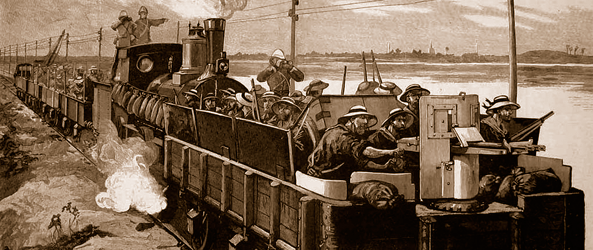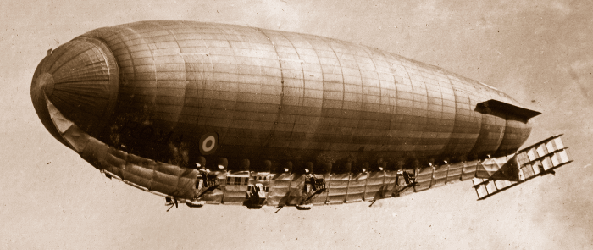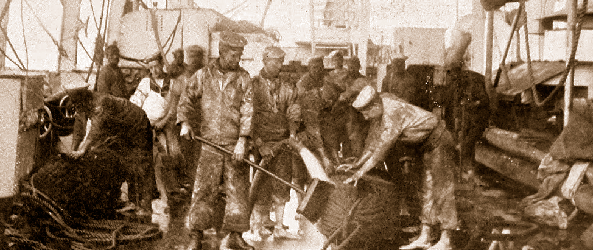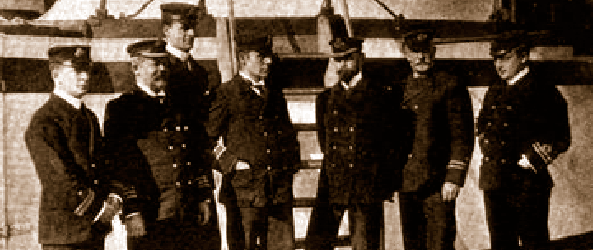Ever since Ronald Whitfield first became a Red Captain, he and his kite, the Cloud Leopard, has been a source of constant irritation to the merchants of the Oenotrian Empire. To date, the Cloud Leopard has captured a dozen prizes, all Oenotrian, and caused great damage to the sky fleets of the empire. As well, Whitfield's old first mate, Andrew Phillips, soon became a Red Captain in his own right, commanding the Sky Lynx, a small screw galley refitted with a steam engine. By working together, the two Red Captains have been able to defeat more dangerous opponents than ever before.
Before the arrival of the humans on Mars, Martian culture had reached a point of stagnation in which innovation had nearly died out. In the years before the onset of this stagnation, Martian engineers developed a number of interesting and innovative weapons, which have never entered common usage for one reason or another. Two of these items are listed below.
Thunderbolt Quick-firing Light Gun
The thunderbolt is a variation on the theme of Earth's 15th century Veuglaire, which uses a removable firing chamber. This removable canister allows the Thunderbolt to have a longer barrel than standard light guns, since the weapon need not be muzzle-loaded. The canister is held in place by one or more wedges in primitive models. After firing, the crew loosens and removes the expended cartridge, replaces it with a loaded one, and tightens it in place.
This means of loading raises the gun's rate of fire somewhat, although three gunners are required to crew the weapon. The canister must be loaded with powder and shot in conventional fashion, but a number can be prepared ahead of time, at leisure, ensuring a better measured charge than is possible in the heat of battle. The increased rate of fire is achieved at a loss of range, however, because the seal at the breach is usually poor (due to corrosive effects of Martian gunpowder), and considerable pressure is lost, with consequent reduction in range. Despite this, Thunderbolts are still popular with some captains.
|
||||||||||||||||
Lob Gun Incendiary Projectile
The incendiary round for lob guns is a projectile that combines some of the impact damage of the normal lob gun round with the incendiary traits of Martian liquid fire. In form, the incendiary round consists of approximately a dozen small, stone containers of Martian liquid fire, banded together with iron to form a projectile nearly the same size as a normal lob gun round. The containers are scored to make them fracture upon impact, even with a wooden-hulled ship. The round is loaded into a lob gun in the same manner as a normal lob gun round. When the projectile is fired, one of the stone containers sometimes fractures in flight, which gives the round the appearance of a fireball as it flies through the air. The remaining containers burst and spill liquid fire when the round strikes its target. The fire level suffered by the target is determined by rolling 1D6 and subtracting the range in hexes from the gun to its target.
The incendiary round also causes impact damage: A lob gun firing such a round is considered to have a penetration of 1 and a damage value of 3 (rather than the standard values of Pen 2 and DV 4). As well, there is some chance of a loss of trim critical being caused by an incendiary round, but because of the projectile's lighter weight, that chance is not so great as with a normal round. When an incendiary round hits a target from a lob gun, roll 1D6: on a roll of 1-3, a loss of trim critical occurs.
Because of the difficulty involved in constructing incendiary projectiles for lob guns, each round is considered to have a cost of £5. Players should be careful to keep track of exactly how many incendiary rounds a ship carries. If a hit occurs on a lob gun magazine containing incendiary projectiles, roll 1D6 for each such projectile to determine the level of fire that breaks out on the ship.
|
The Oenotrian Empire responded to this increased threat by stepping up efforts to locate and destroy the Cloud Leopard and its companion vessel. With great numbers of Oenotrian warships searching for them, Whitfield and Phillips recently headed north to prey upon High Martian pirates until the ire of the Oenotrians had cooled a bit. Unfortunately for the two Red Captains, a number of Oenotrian warships pursued them all the way to the Meroe Badlands.
A few days before the beginning of the scenario, the Cloud Leopard and the Sky Lynx stumbled upon a pair of Sky Runner class vessels. The Red Captains heavily damaged the two ships, but in the fighting, the Sky Lynx took a boiler hit, and the Sky Runners were able to escape.
Most of the drinking water on both Red Captains' ships went to replace that lost from the Sky Lynx's boiler. With the crews on short water rations, Whitfield and Phillips decided to set a course for the city of Mylarkt to replenish water and pick up other supplies.
While heading for Mylarkt, however, the Red Captains discovered an abandoned High Martian kraag and stopped to explore it. Upon entering the kraag, they found a spring at its bottom. With the Cloud Leopard keeping watch overhead, the Sky Lynx set down and replenished its water supply. Then, the two ships switched places, and the Sky Lynx kept watch. While the Cloud Leopard was thus occupied, a violent sandstorm swept through the region. Unable to climb above the turbulence, the Sky Lynx was forced to set down as well. Once the storm passed, the two vessels prepared to get under way, but a trio of Oenotrian warships had followed close on the heels of the storm. Spotting the two ships on the ground, the Oenotrians closed in for the kill. At this point the scenario begins.
The Red Captains' Vessels
The Cloud Leopard is simply a Swiftwood-class kite that has been refitted with British weaponry. The Sky Lynx was originally built in a Martian yard, but was later refitted with a British steam engine and weapons.
The Cloud Leopard has Crack crews on its four-inch long gun and the spar-mounted six-pounders. Its other gun crews are Trained. The Sky Lynx has Crack crews on all of its guns. Marines on both vessels have modern rifles and are Trained.
Both ships have a number of smoke screens and spike droppers, as indicated in their respective ship record forms.
The Oenotrian Vessels
The three Life's Ends in this scenario are new designs, not encountered by the Red Captains before. One of these vessels is equipped with Thunderbolts and has exchanged its forward heavy gun for a rouge gun.
Each of the three ships has one Crack, two Trained, and one Green gun crew (to be distributed, as the Martian player desires). The marines on all three ships carry muskets and are Trained.
Setup
Ship record forms for all ships in this scenario are included with this article, as is a map of the terrain over which the battle takes place. To play this scenario, you will need to reproduce this map on a two-inch hex grid (if this is not practical, the Kraag Barovaar map from Sky Galleons of Mars may be substituted in which case the starting points will have to be changed). The Cloud Leopard begins at Low altitude at point 4. The Sky Lynx begins on the surface (one step below Very Low altitude) at point 5.
Martian 1 begins at point 1, at Medium to High altitude. Martians number 2 and 3 enter the map at points 2 and 3 respectively, during the Martian player's movement phase of the second game turn. They also begin at Medium to High altitude.
Victory Conditions
The Oenotrians get 1 victory point for driving the Sky Lynx from the map, 2 points for destroying the vessel and 4 points for capturing it. They get 2 victory points for driving the Cloud Leopard away, 3 points for destroying it, and 6 points for capturing it.
The Red Captains get no points for driving an Oenotrian vessel off the map, but they get 1 point for each ship they destroy and 2 points of each one they capture.
Model Conversions
You can easily make specific models for the ships in this scenario using the standard Sky Galleons of Mars sprues.
Extra sprues of these ships were available from GDW in the packages of Martian Cloudships and Aerial Gunboats.
To make a Life's End, simply replace the forecastle of a large screw galley model with the forecastle of a small kite model, then carve or sand off the lob gun mount.
The Sky Lynx can be built from the hull of a small kite and the tail of an Aphid. Remove the fore gun from the kite and glue the tail of the Aphid in its place to create a quarterdeck. Finally, fill in the mast hole and sand it smooth.
The Cloud Leopard is built as if it were a Swiftwood, following the instructions included with Martian Cloudships. Paint the ships to your individual taste, and enjoy the game.
by Bret Foland and Lester W. Smith, ©1990; the article originally appeared in Challenge, #40 & #41, GDW's magazine of science fiction gaming. It is used here with the permission of Mr. Smith.

















